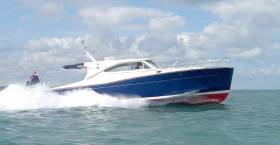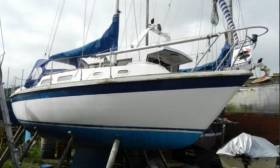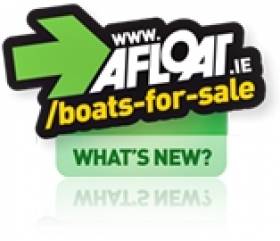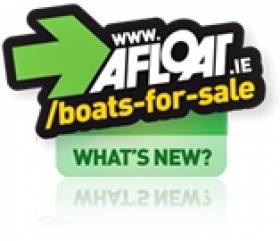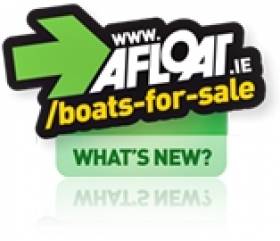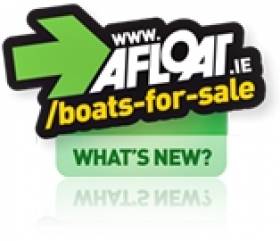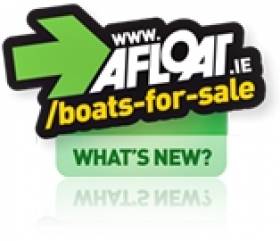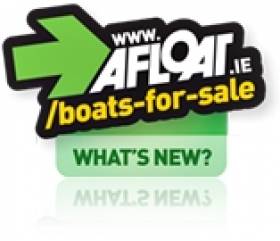Displaying items by tag: Afloat boats for sale
An Oyster LD43 powerboat is listed on Afloat boats for sale. Ever since viable powercuisers first cut their way confidently across the sea, yacht designers and quality boatbuilders have aspired to create a dreamship which has all the attributes of a reliable motoryacht, yet also has that extra something which will appeal to a potential owner who first came to boats through sailing writes W M Nixon.
The customer they have in mind will not have lost his or her interest in sailing, yet they’ll find that this option is readily available on the sailing boats of friends. But by having a “sailing man’s powerboat”, they are able in return to provide their sailboat-owning friends with an entertaining alternative and occasionally a very welcome support vessel, while for their own use they have a multi-functional yet elegant vessel which can handily nip out for a quick spin on a summer’s evening after a demanding day at the office, while as the same time having the capacity to make worthwhile weekend or longer ventures.
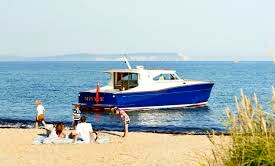
A good evening forecast? With an Oyster LD43, you and your family can be at the nearest beach within minutes.
In our Irish weather, with today’s forecasting providing unprecedented accuracy, a useful powercruiser such as the Oyster LD43 enables you to make snap decisions to take best advantage of a good weekend forecast without the hassle of having to assemble a full crew, as she can be easily handled by two.
British firm Oyster Yachts are of course best known for their top-end range of sailing cruisers, which have now penetrated the international market to such an extent that Round the World Cruises-in-Company have been organized exclusively for fleets of Oysters. In doing this, and in organizing a plethora of Oyster Regattas as various sun-filled venues, the Oyster people have been able to build up a clear view of the kind of powerboat their customers might like if they were so minded, and the Oyster LD43 is a fascinating project in her own right, as she also had the American market in mind – there’s a whiff of the stylish Long Island Sound private commuter launch about her.
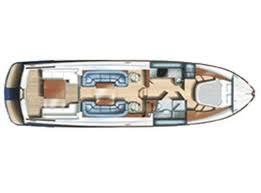
The generous provision of stylish pace is a revelation for anyone accustomed to multi-bunk layouts.
For those of us accustomed to packing as much accommodation as possible into a smaller boat, the layout is a revelation. It’s arguable that from a cruising and overnighting point of view, she’s a two-person boat, even if there are two settee berths in the capacious saloon/wheelhouse. And with her twin Yanmar 440 diesel engines allied to computer-controlled Hamilton jet propulsion, it’s evident that the photo of her being used for a family outing to a handy beach is not just a promotional stunt – with jets, you can confidently go into shoal waters. As for badly-marked lobster and crab pot lines which are the bane of cruising under power inshore in Ireland – they cease to be a problem.
All the Oyster LD43s are finished in the same distinctive dark blue, and it suits them to perfection. Crosshaven Boatyard found there was such enthusiasm for the marque in Ireland that having sold one to the Dublin area, they have now added this English-based on to their books. Total style and quality finish like this doesn’t come cheap, but with the pound sterling going through some fluctuations recently, you may find this boat is now priced at something less than the originally-quoted €235,000.
View the Oyster LD43 advert on Afloat boats for sale
Westerly Griffon – The Ideal Entry Boat For Sale On Afloat.ie
After last weekend’s superb weather, there could be many dinghy sailors who might be thinking that, with new family responsibilities or whatever, it’s time they moved up a to good little all-round cruiser with a more-than-decent performance writes W M Nixon.
Or maybe you’ve taken a sailing course or two, and decided that while dinghies may not be your thing, sailing a boat with a lid most definitely is, and moreover you feel the first tugs of that peculiar series of mixed emotion, the boat-owning vocation.
Either way, the ideal entry boat in the small performance cruiser stakes is for sale on Afloat.ie down Crosshaven way. For a 26-footer, they packed an impressive amount of accommodation and headroom into the Westerly Griffon. But don’t think this makes her a floating caravan. On the contrary, she was designed in 1979 by Ed Dubois when he was very much the rising talent in yacht design, and he gave her everything he knew for good performance, while somehow complying with Westerly Marine’s need for no-nonsense robust construction and oodles of space.
In all, there were 329 built, and the version for sale at €9,950 is the fin keel type. But even with the dreaded twin keel option which Westerly usually insisted on, Dubois was on top of his form, spending hours at the test tank until he got a double configuration which performed startlingly well. So much so, in fact, that he and a crack crew took the first one out to race the 1979 Lymington Autumn Series (one of the biggest in the country back in the day) and won their class overall against some very hot stuff. The fin keel version performs even better, and she’s one of Westerly’s best.

The first Westerly Griffon in 1979. The Ed Dubois design has stood the test of time remarkably well
Read the full Westerly Griffon advert here
1720 Nationals Beckons With this 1997–Built Boat at €12,500
#1720 – You're in good time for the 1720 National Championships or any of this year's 1720 fixtures (see comment below from the class association) if you opt for this fun one design sports boat that the seller, MGM Boats, says is all set for the 2014 season.
Moored in Cork, this 1997–built boat is a 'really clean' example. The boat comes well equipped with a full sail wardrobe, fully kitted road trailer with masting kit and lockers.
At €12,500, she's yours to sail away!
More on this boat in the one design section of the Afloat Boats for Sale site.
Brand New Cargoship Makes Maiden ‘Irish’ Call to Namesake Port
#NEWBUILD VOYAGE- As previously reported on Afloat.ie Abis Dublin, a brand new multi-purpose heavy-cargoship made her maiden 'Irish' port of call to her namesake port yesterday, writes Jehan Ashmore.
The D-class 6,000 tonne newbuild had docked in Dublin Port having spent the previous night at anchor in Dublin Bay. On board the Dutch built vessel, operated by Abis Shipping, wind-turbine components could be seen at the aft end of the ship, noting her superstructure is located well forward close to the bow.
Abis Dublin was delivered earlier this month from shipbuilder's in Harlingen, where her owners are based and where the vessel is registered. Her first actual commercial sailing took place earlier this month, between Vlissingen to Emden, with an inaugural cargo of windmill components, which were later unloaded on arrival in Rouen. From the River Seine she then departed bound for Dublin, where the vessel is berthed alongside Ocean Pier.
Her sister Abis Dover, the leadship of the new class series made a call with B-class Abis Belfast last month, again to discharge windmill components. The latter vessel made a further call to the capital port just before Christmas, such activity reflecting the expanding Irish renewables energy sector.


























